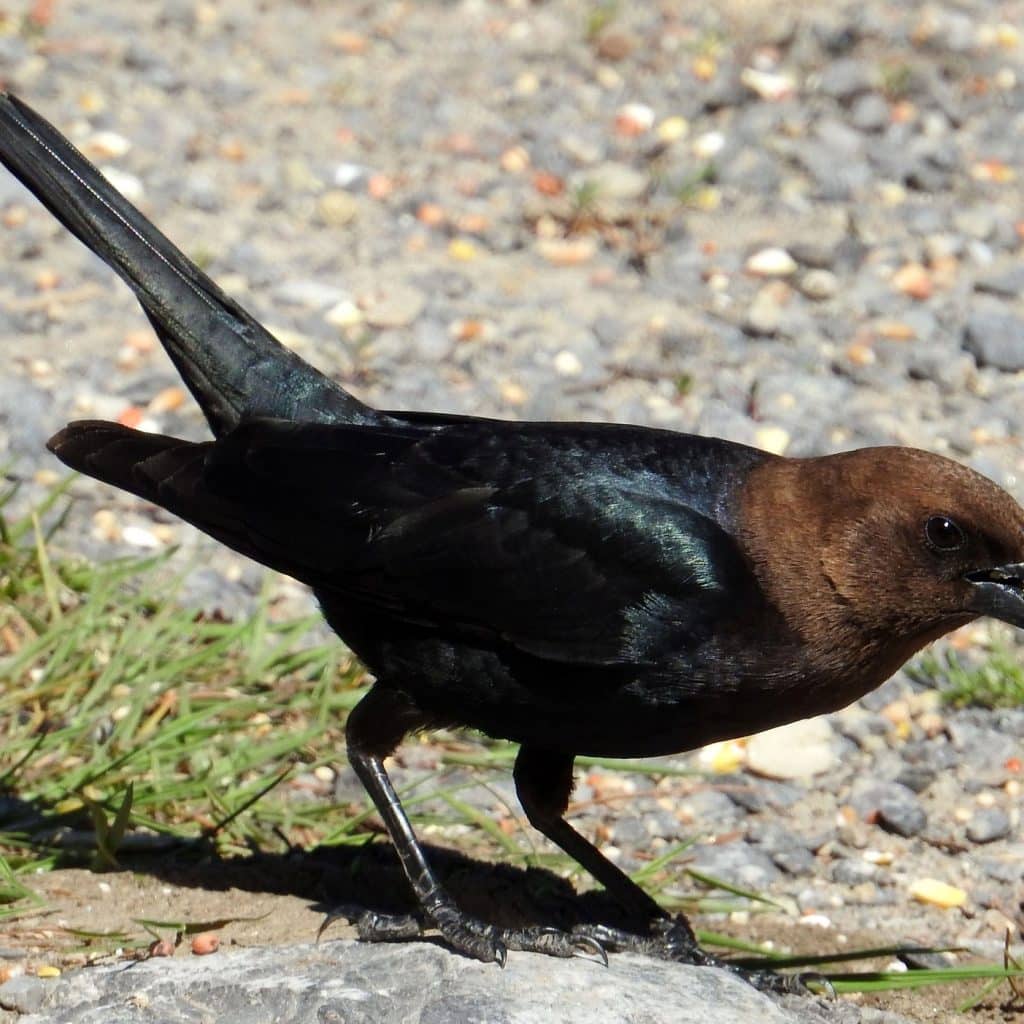Catching a glimpse of eggs and baby birds in backyard nests is always a treat this time of year. But on occasion, an odd egg may show up that does not match the others. In the eastern U.S. that odd-looking egg was placed there by a Brown-headed Cowbird. Known as a brood parasite, this common native species relies on other birds to incubate and raise their young, often at the expense of their own brood. My good friend John Lipscomb found a cowbird egg in one of his Bluebird boxes and inspired this story.
Sounds brutal, but this strategy works well for this moderate-sized blackbird. What makes its story interesting is our role in helping this species spread across the country. Originally a species of open grasslands, Brown-headed Cowbirds ranged across the central plains, living among the herds of bison that they followed around. Adults eat seeds of grasses along with insects kicked up by cattle or bison. As they moved, they laid their eggs in nests of other blackbirds and species that build nests. Cowbirds have been reported to use the nest of 220 species of birds. That apparent nomadic life makes sense.

In order to work, however, the interloping eggs must be ignored, and the hatchlings must overwhelm the host nestlings and fool their foster parents into taking care of them. To their advantage, the larger cowbird eggs are largely ignored and once laid, hatch much faster than those of the host species. Once hatched, the larger cowbird will often toss out their smaller nest mates. These larger nestlings also beg more aggressively, demanding and getting most of the food delivered by adults. Even after leaving the nest, young cowbirds can be seen begging and being fed by their foster parents – an odd scene to observe, often with a much smaller adult feeding an oversized youngster.
At least a few species of songbirds have learned to identify cowbird eggs. Larger species will puncture the eggs and toss them out of the nest. Yellow Warblers will simply build a new nest on top of the old one and hope that the cowbird does not return to deposit another eggs.
But before we condemn this species, let us consider the facts. First, Brown-headed Cowbirds are native to North America and are protected under the Migratory Bird Treaty Act. It is unlawful to remove an egg from a nest or kill nestlings or adults. There is no hunting season for cowbirds. Invasive species present a totally different scenario relative to their impact on other native species, but cowbirds are a natural part of the bird community in our country. They have been documented to be a threat to a few endangered species of birds, but largely of moderate impact to the majority of their host species.
Secondly, we have but ourselves to blame for helping this species spread across the county. In our 200-plus history of clearing the land for farmlands and communities, we have expanded open areas in what was once largely unbroken forests of the eastern U.S. Recall that cowbirds evolved in grasslands. We created similar open landscapes into which they have spread. No shortage of host species of birds to raise their young. So, we are partially to blame.
Apart from finding an odd egg in your backyard nest, adult Brown-headed Cowbirds will come to seed feeders. Males are easily identified with their brown heads. Females are more muted in color. They also commonly join large mixed flocks of blackbirds in winter. Two other species of cowbirds may also be seen in winter along the Gulf Coast, but usually as individuals, including the Bronzed Cowbird (a southwestern species) and the Shiny Cowbird (Caribbean).
For the unfortunate Bluebird parents on John’s bluebird trail, their brood may be smaller, but they are still supporting a native bird that has a place in our world.
Hope to see you in our great outdoors!